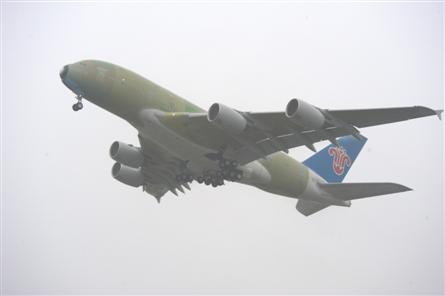Airbus forecasts that the Asia Pacific will become the world's biggest market for airliners in the next 20 years, with carriers in the region taking delivery of 8,560 new aircraft worth $1.2 trillion.
This will represent 33% of new aircraft deliveries worldwide, says Chris Emerson, Airbus's senior vice president product strategy and market forecast. Strong economic growth, libereralisation and greater wealth will "enable more people who have never flown to take to the skies."
Of the 8,560 new aircraft, 5,200 will be single aisle aircraft, 2,580 twin aisle aircraft, and 780 "very large aircraft" such as the A380.
 |
|---|
© Airbus |
"Within the next 20 years Asia Pacific airlines will be carrying a third of all passenger traffic worldwide and two thirds of all freight passing through the region," says Emerson. "In order to meet the expected demand efficiently, larger aircraft will be need to ease congestion and do more with less."
The European airframer predicts that passenger traffic for Asia Pacific will grow by 5.8% annually, compared with 4.8% globally. Freight traffic in the region will grow 7% annually, compared with 5.9% globally.
Revenue passenger kilometres (RPK) in Asia will also grow to 33% of the world's total in 2009, from just 27% now. This will come at the expense of North America and Europe. Airbus foresees North America's share of global RPKs falling to 20% by 2029, compared with 28% now, and Europe's share falling to 25%, compared with 28% now.
Airbus also notes that its duopoly with US rival Boeing will ultimately fray in the face of newcomers such as China's Comac, which is developing the C919 to compete with the A320 and 737 families, the Bombardier Cseries, and the Russian MS-21. In a presentation slide discussing the new entrants, Airbus placed a question mark next to the name of Brazilian airframer Embraer, which has yet to announce an aircraft in the A320/737 category.
It projects that such new entrants will reduce it and Boeing's overall share of new gross orders.
Airbus also sees large potential in Asia's still nascent low cost carrier market. It notes that low cost carrier growth in Asia is rising 38% annually, with LCC market share at 14% in 2009, compared with 2-3% in 2001. Globally, Airbus says LCCS comprise 20% of world seats, providing significant room for upside.
Source: Flight Daily News
















